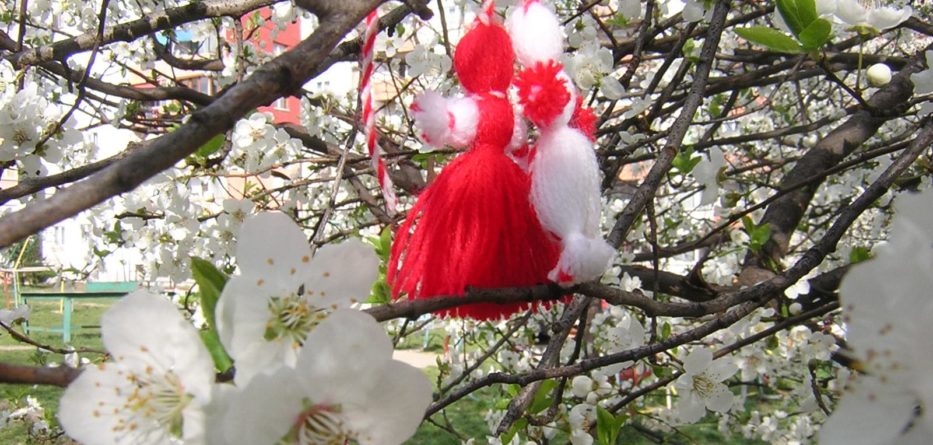Il 1 ° Marzo il popolo bulgaro celebra una festa tradizionale chiamata Baba Marta (o nonna marzo) per salutare l0inverno e dare il benvenuto alla primavera. In questa giornata i bulgari si scambiano il cosiddetto “Martenitsi” ( “Marteniza” – singolare, “Martenitsi” – plurale) e si augurano “Chestita Baba Marta!” (buon nonna Marzo). In questo modo augurano salute, fortuna e felicità alla famiglia e agli amici.
La Marteniza è un piccolo ornamento fatto di fili rossi e bianchi attorcigliati – lana, seta o cotone.
E’ il messaggero dell’arrivo della primavera e di una nuova vita. E’ un simbolo stilizzato di Madre Natura – il bianco simboleggia la purezza della neve che si fonde con il rosso – il tramonto del sole, che diventa sempre più intenso con l’avanzare della primavera. Queste due risorse naturali sono la fonte della vita. Sono anche collegate con la necessità di equilibrio nella vita. Il bianco è un simbolo di forza, purezza e felicità; il rosso è associato alla salute, il sangue, il concepimento e la fertilità.
Quando qualcuno ti dà una Marteniza la devi appuntare sui vestiti, attorno al polso, o intorno al collo e tenerla lì fino a quando non vedi una cicogna o un albero da frutto in fiore, per la prima volta nel corso della stagione. Dopo di che, la puoi legare a un albero in fiore come augurio di fertilità.
Come un amuleto, alla Marteniza è stato attribuito un potere magico in grado di proteggere dal malocchio e dalle malattie.
L’usanza di indossare la Marteniza è probabilmente uno delle più interessanti tradizioni bulgare legate all’antica storia pagana della penisola balcanica ed è considerata unica per la Bulgaria.
Secondo una delle tante leggende, questa tradizione è legata alla fondazione dello stato bulgaro nel 681 dC.
On the 1st of March Bulgarian people celebrate a traditional holiday called Baba Marta (or Grandma March in English) related to welcoming the approaching spring. On that day Bulgarians exchange the so called “Martenitsi” (“Martenitsa” – singular, “Martenitsi” – plural) and tell each other “Chestita Baba Marta!” (Happy Grandma March). This way they wish health, good luck and happiness to family and friends.
Martenitsa is a small piece of adornment made of twined red and white threads – woolen, silk or cotton. They are the heralds of the coming of spring and new life. This is a stylized symbol of Mother Nature – the white symbolizing the purity of the melting white snow and the red – the setting of the sun which becomes more and more intense as spring progresses. These two natural resources are the source of life. They are also associated with the male and female beginnings and with the need for balance in life. The white is a symbol of strength, purity and happiness; the red is associated with health, blood, conception and fertility.
When someone gives you a Martenitsa you should wear it either pinned on your clothes, tied around the wrist, or around your neck until you see a stork or a fruit tree in blossom for the first time in the season. After that you can tie it on a blossoming tree for fertility. Like a kind of amulet Martenitsa was attributed a magic power believed to protect folks against evil eye and diseases.
The custom of wearing Martenitsa is probably one of the most interesting Bulgarian traditions related to the ancient pagan history of the Balkan Peninsula and it is considered to be unique to Bulgaria. According to one of the many legends this tradition is also related to the founding of the Bulgarian state in 681 AD.








